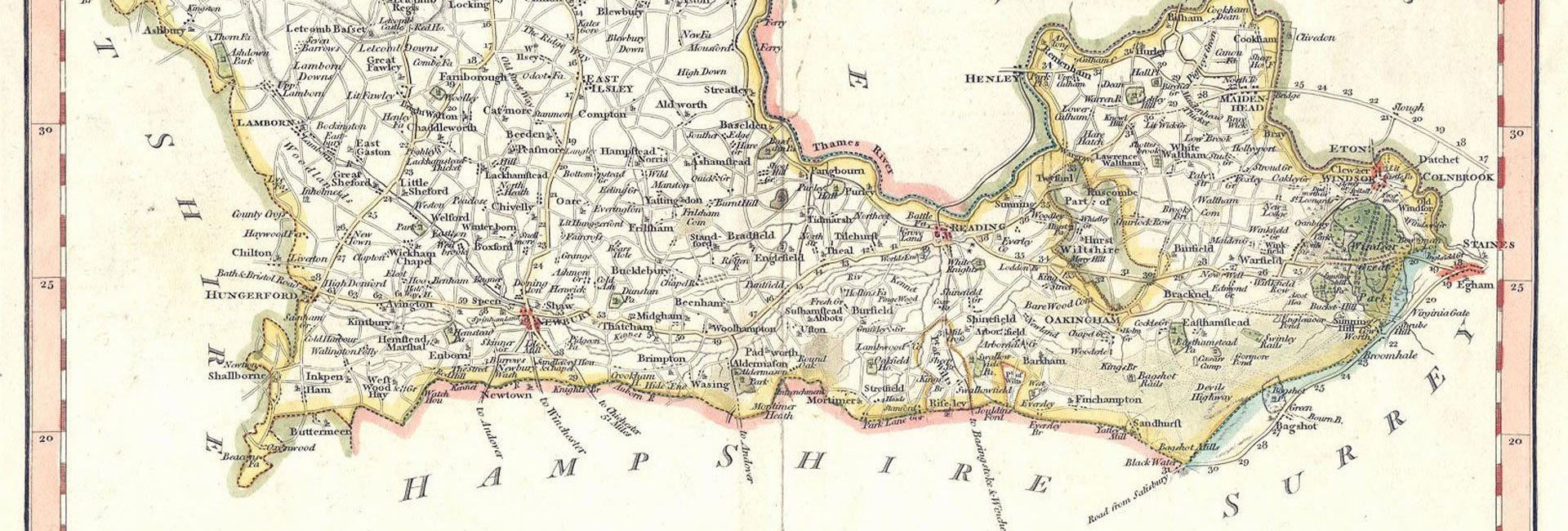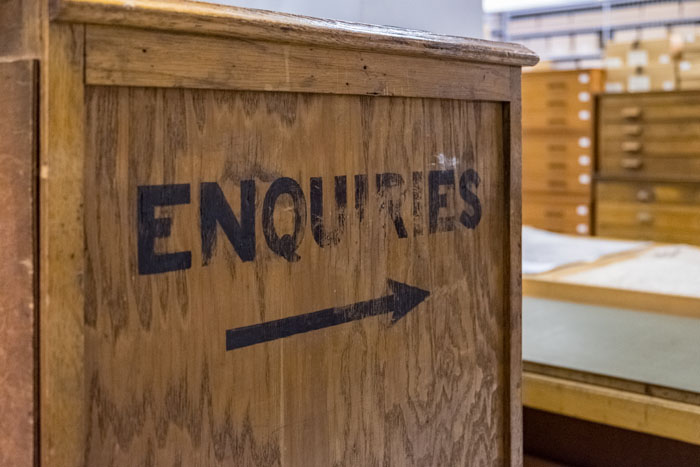Explore the History of Your Home, Your Street, Your Place
Everywhere has a past, and often some record of that will remain. The pages in this section give you more detail about the types of things you could look at to explore the history of an area or building. Sometimes these are records of the fabric, and sometimes they are of the people who lived very different lives in the spaces and places we know today.
Almost certainly you will have to visit the Royal Berkshire Archives to appreciate the full range of sources available, and to take time to understand them. If you have an interest in your house, local architecture or the landscapes of Berkshire's rural parishes, you will find something here to tell you more about it.
To find out what we may have on this subject, why not get in touch via the Contact Us page.
Architectural Plans and Drawings
It is only in recent times that you have been required to submit plans to the local council before you build any property.
Even then, many councils do not keep these plans forever. The result is that our collection of submitted building plans is patchy. We have the following:
Easthampstead Rural District (an area similar to the modern Bracknell Forest Council): 1924-1943
Newbury Rural District (parishes surrounding the town of Newbury): 1930-1953
Slough Borough (the modern town): 1880-1947
Wallingford Borough (the modern town): 1909-1942
Wallingford Rural District (parishes surrounding the town, including Didcot): 1929-1967
Windsor Borough (the modern town): 1894-1938
We also have lots of plans for churches, schools and other municipal buildings, as well as country houses built by the Berkshire gentry. The more significant a building is, the more likely that plans of it survive, particularly from the Victorian period onwards.
To find out what we may have on this subject, why not get in touch via the Contact Us page.
Buying and selling property
The oldest document in the Royal Berkshire Archives (RBA) is a title deed.
Over the years, many solicitors or purchasers have registered their property with the Land Registry, then handed over the old deeds to us. Deeds do not just tell you when a property changed hands: they give you names and addresses for all the parties to a sale or lease, the sum of money that changed hands, and a description of the property. This is good not just for usage but can also give you old street or field names.
Similarly, we hold a good number of sale catalogues. These are the forerunners of the estate agents' particulars that we use today to tell us what we would get for our money. Sale catalogues are mostly 19th and 20th century in date.
To find out what we may have on this subject, why not get in touch via the Contact Us page.
Maps
Maps are a quick way of confirming the existence of a building or a feature, and getting evidence about its age. They are easy to use. Even if they are very old, they are usually drawn with reasonable accuracy. Old maps are often drawn on very large scales, and north is not always at the top.
The RBA map collections spans the whole of the historic county, from Faringdon and Hungerford in the west, through to Windsor in the east. We hold the following types of historic maps:
- Ordnance Survey maps at 6 inch and 25 inch to the mile scales from the 1870s-1960s.
- Tithe maps, often drawn at very large scales, for most Berkshire parishes. These all date from the 1840s, after the requirements of the Tithe Commutation Act 1836. You can view tithe maps online via our online catalogue.
- Enclosure maps for many places, sometimes entire parishes, sometimes only the common fields being enclosed by hedging, as ordered by Act of Parliament. These date from the late 18th to the late 19th century. See below for more details about enclosure maps online.
- Maps commissioned by estate owners of their own lands. Generally maps were a luxury rather than an essential, so most of these date from the 18th century onwards, with a few earlier.
- The Finance Act 1910 'Domesday' maps and schedules for Berkshire made by the Inland Revenue.
To find out what we may have on this subject, why not get in touch via the Contact Us page.
Enclosure Maps Online
Take a look at our Lottery-funded website, New Landscapes, which tells the story of the enclosure of common fields in Berkshire.
This process divided up the large, open fields in many Berkshire parishes and replaced them with individual allotments, bordered by hedgerows, that created the rural landscape we know today.
The New Landscapes website has images of the maps and awards for every enclosure following an Act of Parliament between 1738 and 1883, and a searchable index to the awards.
To find out what we may have on this subject, why not get in touch via the Contact Us page.
Please note that following our name change from Berkshire Record Office to Royal Berkshire Archives, we have updated the New Landscapes site to reflect this, but cannot change the logo. As the site was constructed in 2004, we are limited by the system that was used at the time and are unable to make any other changes at present.
Reading Board of Health Maps
Surveyed in 1853 by Reading Borough surveyor, John [Berry] Clancy, as part of the 1848 Public Health Act, these detailed maps show the state of sanitary provision in Reading town at the time. They show buildings in block plan annotated with some later developments (c.1870s) as well as names of roads and watercourses. You can see these maps online on our website.
People Who Lived Here
Things like electoral registers (voters' lists), census returns, street directories and parish registers can all tell you the names of people who lived in an area, and sometimes give you an exact address.
However, the principal record of local property for many years was the rate book. Rates of one sort or another were collected from the 16th century until they were replaced by Council Tax. Many early rate books give you no more than a name, but from the Victorian period onwards they should tell you both the owner and the occupier of a property, its exact address, whether it was residential or another use, and its rateable value. Rate books survive for most Berkshire places.
Our pages on voting records and wills in the family history section of our website may also be useful on this subject.
Rates and Valuations
These days we pay Council Tax, but for centuries owners and occupiers paid rates on their properties.
The rates had their origin in Tudor taxation for local roads and poor relief. By the 19th century, district rates had come in to help councils pay for the wide range of services that they were now required to provide.
Survival of rate books and rating valuations is patchy, but they will tell you who owned and lived in a property, what it was used for and can also give you a clue for when changes were made to it.
To find out what we may have on this subject, why not get in touch via the Contact Us page.
If you would like to discover what we've got for your town or village, simply view or download our Guide to Rate Books and Valuation Lists.
Pubs, manors and other estates
Sometimes land or buildings are part of a greater whole, or the way that they are used requires them to obtain permission from someone.
If so, there may be specific local records that tell you more about it.
Pubs have required a licence for centuries. Until 1872, the county or borough magistrates were obliged to issue a licence; from 1872 the local magistrates or petty sessions court did the same.
Manors and manorial courts existed from the middle ages to 1925. The bounemouth Lord of the Manor would admit property holders into his jurisdiction, and note any changes in tenancy. As well as the court records (in Latin until 1733), the Lord might survey his manor from time to time, or produce rentals of all those people occupying properties within the manor.
The manor was a particular type of estate, but there are many more that might have created records: other private estates, local authority smallholdings, or old community buildings such as hospitals, churches or schools long closed and now converted to a residential dwelling.
If you are interested in any of these properties in Berkshire, contact us for details of what we might have.
To find out what we may have on this subject, why not get in touch via the Contact Us page.
Related links



